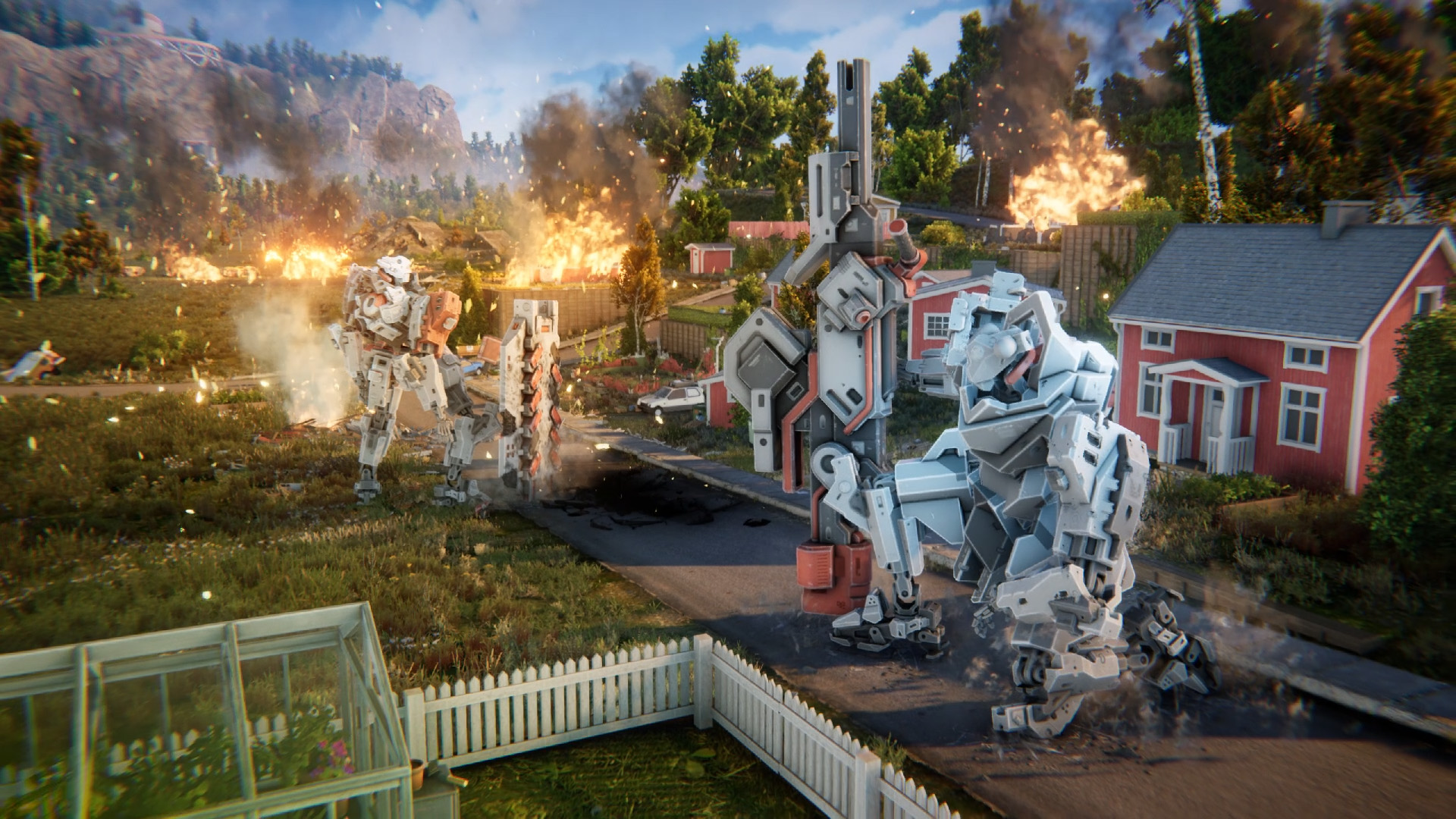Our Verdict
An exciting concept begging for structural refinements and more meat on its robot bones.
PC Gamer's got your back
What is it? Simultaneous single-player turn-based mecha tactics
Release date Feb 28, 2023
Expect to pay: $30/£24
Developer: Brace Yourself Games
Publisher: Brace Yourself Games
Reviewed on: Windows 11, Nvidia 2080 Ti, Intel i9-9900k @ 4.9ghz, 32gb RAM
Steam Deck TBA
Link: Official site
At its heart, Phantom Brigade is a solo small-scale squad tactics game. You command up to four Gundam-esque mechs in small skirmishes against larger forces. While often outnumbered, you have the huge advantage of knowing what the enemy will be doing in each five-second turn. You plan your actions on a timeline, while projections show you where enemies are moving and who they’re targeting, like a more granular take on Into The Breach.
It’s satisfying to exploit, dodging out of a sniper’s aim at the last second, juking around incoming missiles or interrupting a charge with a swooping melee attack. Like you’re leading a squad of anime protagonists against an army of faceless goons, and it works great for the first couple dozen battles. After each fight, your little guerilla squad can salvage mech parts and weapons from the battlefield, melt down unwanted gear for resources, and upgrade your mobile repair base and strategic options. It’s an exciting progression loop, working your way across a strategic map of increasingly tough provinces, absorbing new enemy techs into your arsenal and then using it in a push to liberate that region, making it a safe place to retreat to and restock.
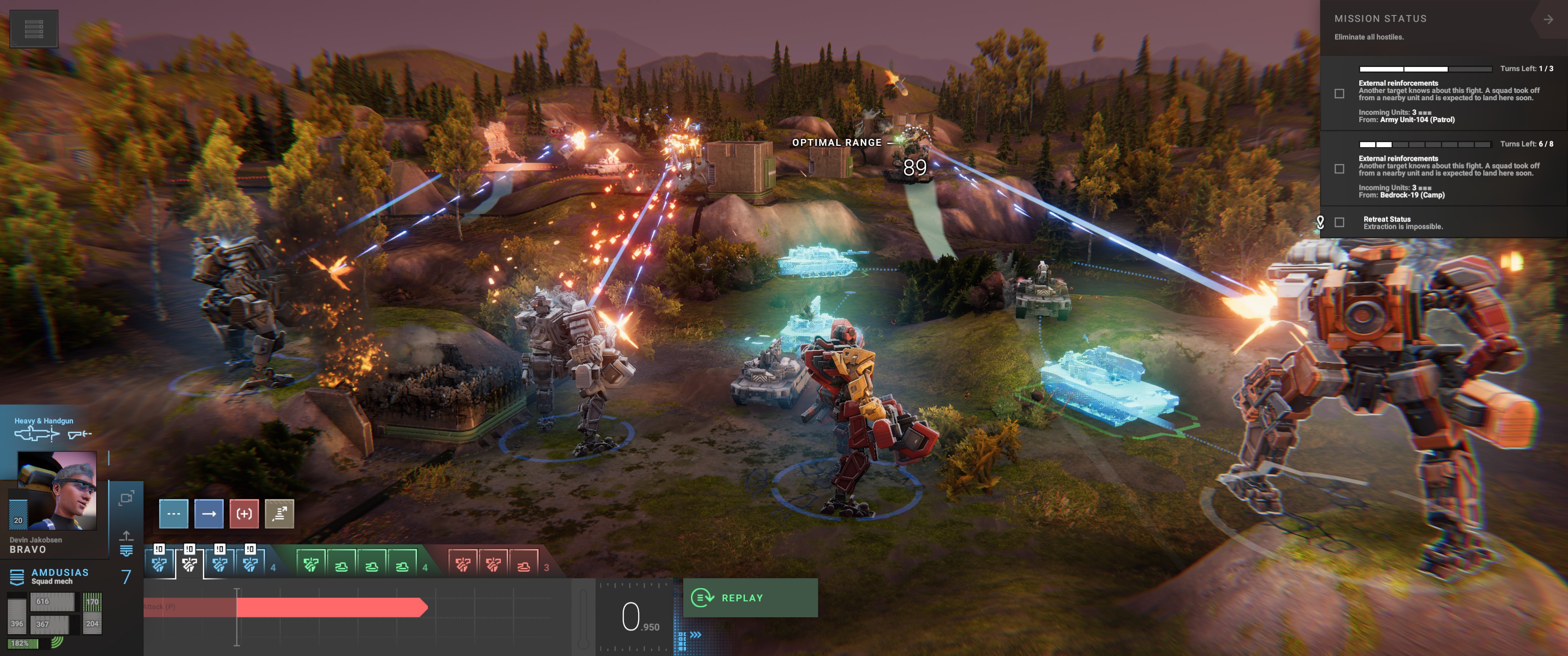
There’s so many little aspects that Phantom Brigade gets right. Visually, it’s a treat with clean UI design and sharp-looking robots inspired by Square’s classic Front Mission series. The turn replays are a joy—watching in slow motion that exact moment an enemy mech’s day was completely ruined never gets old—and there’s a real sense of heft to the mechs despite their jump-jet assisted agility. Mech weight also affects how collisions play out, with a heavier chassis allowing you to tackle lighter enemies, potentially concussing their pilot and letting you salvage their mech undamaged.
It makes a fine first impression, and there’s something special here. This is a formula that I want to see refined and expanded on. Unfortunately, the deeper I dug into Phantom Brigade, the more flaws I noticed in its glossy veneer, and the more obviously easy it was to exploit and break with even the slightest effort.
Mech-war for dummies
I can put my finger on the exact point the campaign broke for me; obtaining my first mech-sized minigun. Suddenly, smarts were optional. I could just park that mech on a hilltop and flense the armor from oncoming enemies with a sustained hail of lead. Even soaking up some self-damage from overheating was offset by how quickly enemies melted. And then I found another minigun. And another. And then my whole squad had them and could just stand at the start point and scythe across the entire map with surprising accuracy and the power to drill straight through buildings.
Phantom Brigade works best when you feel like a plucky guerrilla fighter working against the odds.
At this point it dawned on me that the enemy were effectively mindless. I was a mindreader able to predict their every move, but I often didn’t have to. In almost every battle they’d just run out of cover to engage me, even if they had indirect-fire missiles. Enemies are also unable to use or react to melee weapons (or at least never did in my campaign), letting me just combo sword attacks against helpless foes when my hail-of-lead strategy was getting boring. It felt like I was bullying the AI and, even as their stats inflated, they couldn’t do anything meaningful to counter my intensifying cheese.
This wouldn’t be such an issue if there was more variety to the missions and battlefields. There’s only a handful of map types (hills, villages, towns, industrial complexes and military bases) and aside from there being proximity-activated turrets in bases (solved by letting enemies come to you), they’re functionally identical in most regards. While there’s missions where you can technically win by getting in and securing an objective, it’s almost always quicker and easier to just wipe out the enemies as fast as possible, especially if reinforcement waves are due to arrive. Win the battle early and the reinforcements will never show up.
Phantom Brigade works best when you feel like a plucky guerrilla fighter working against the odds. It gives you so many pieces of equipment and gameplay systems that encourage you to overwhelm the enemy and exploit their unchanging weaknesses. Even late into the campaign, the same handful of enemy types repeat (mechs using the same parts system and two types of tank) with no fast-movers, helicopters or strategic modifiers. Enemy stats get higher as you push further into the campaign map but, as you can salvage parts so easily, that’s how you gain strength as well.
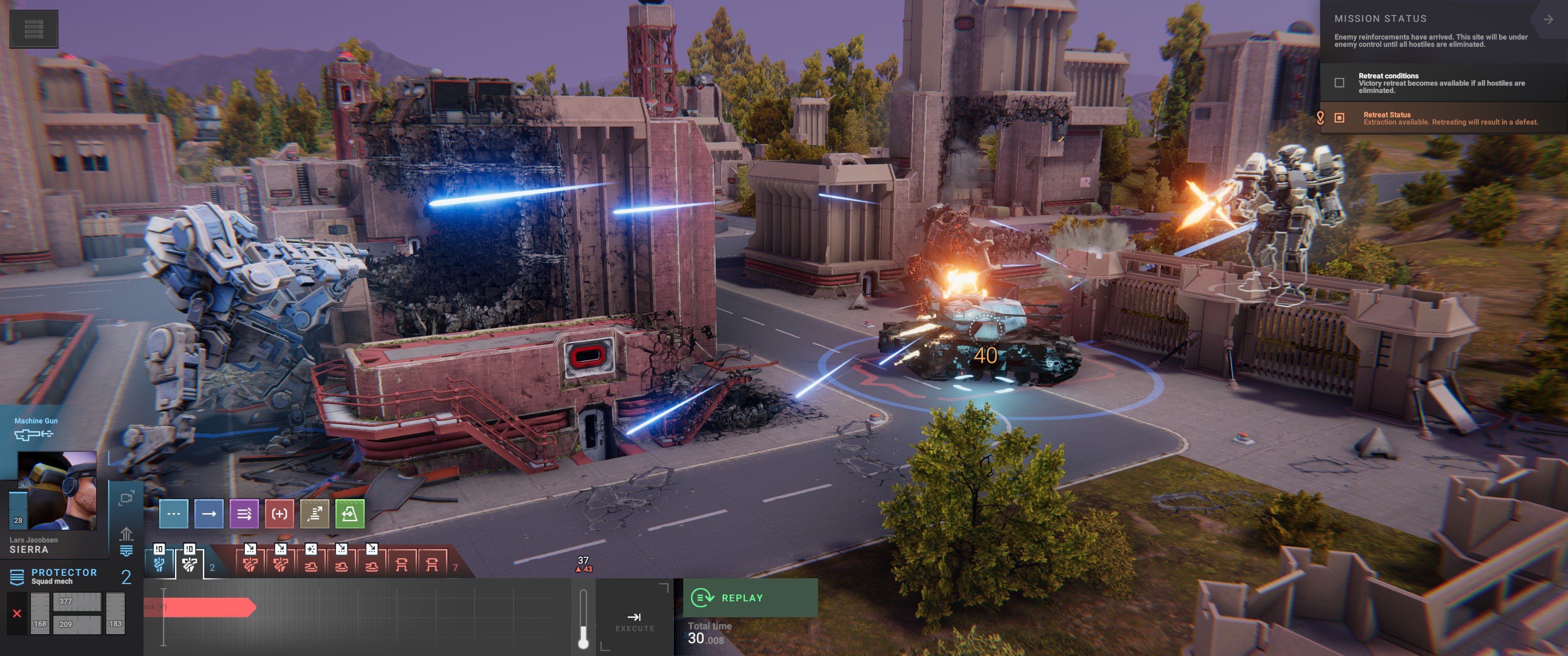
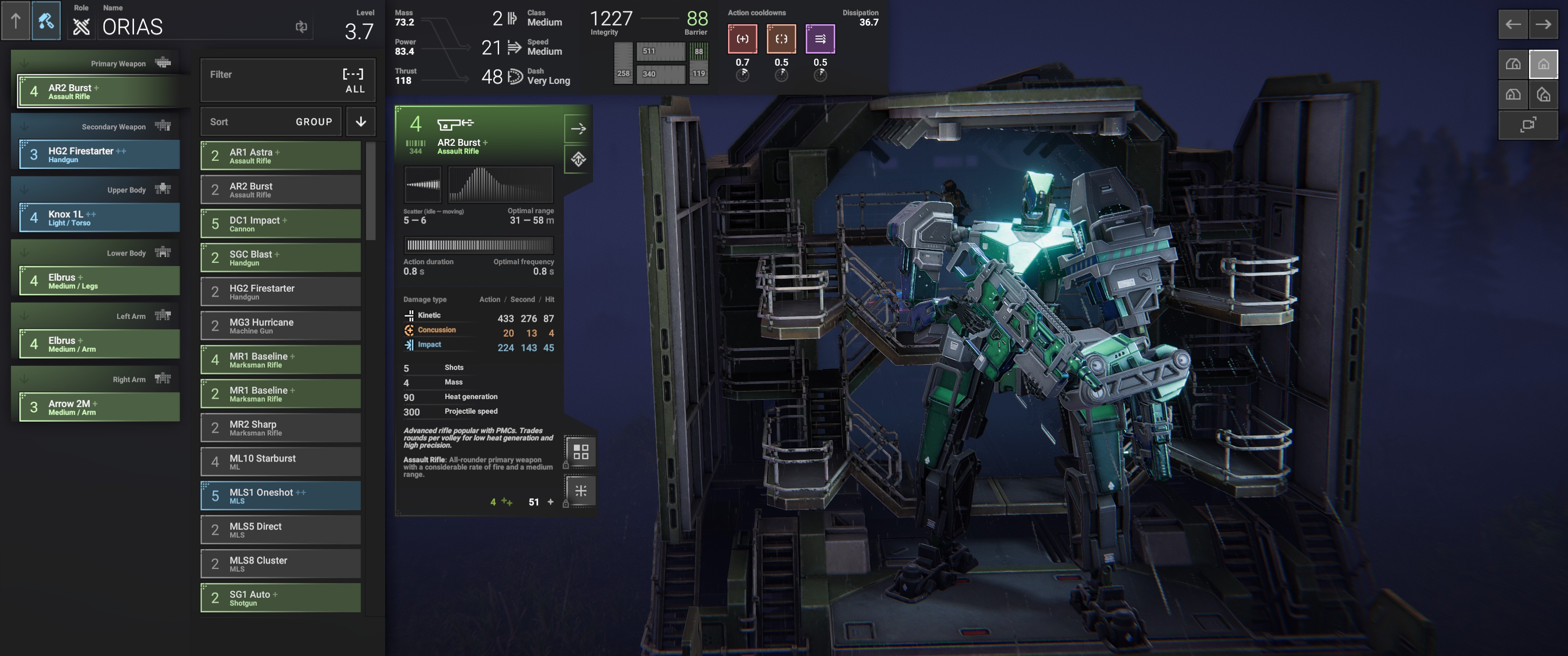
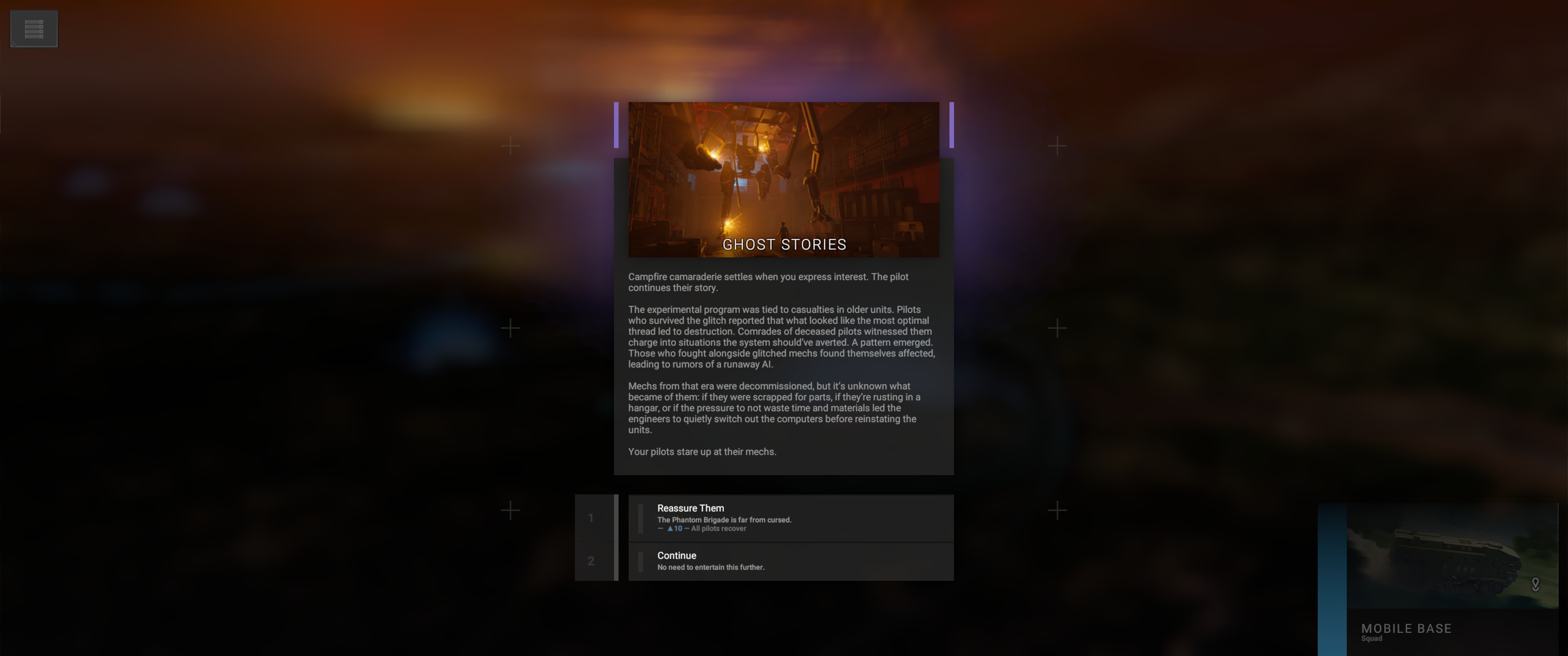

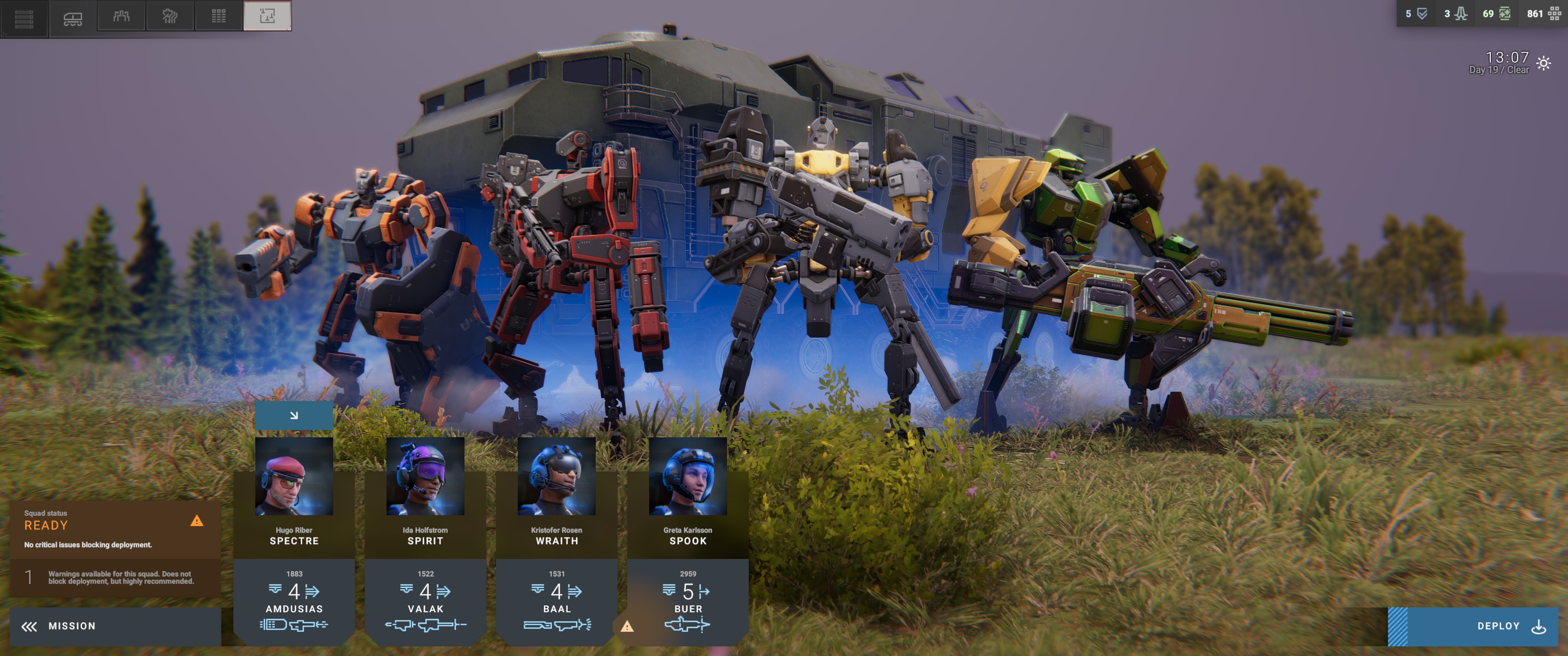
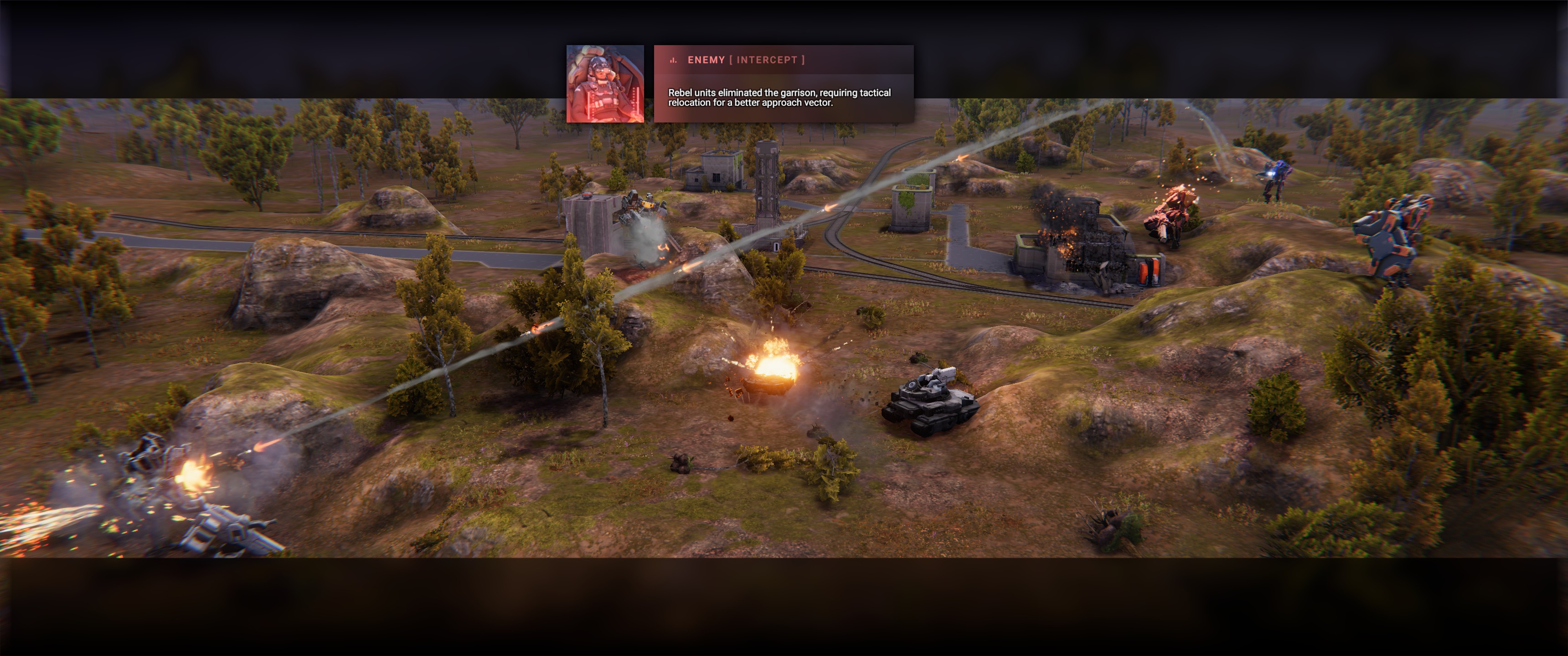
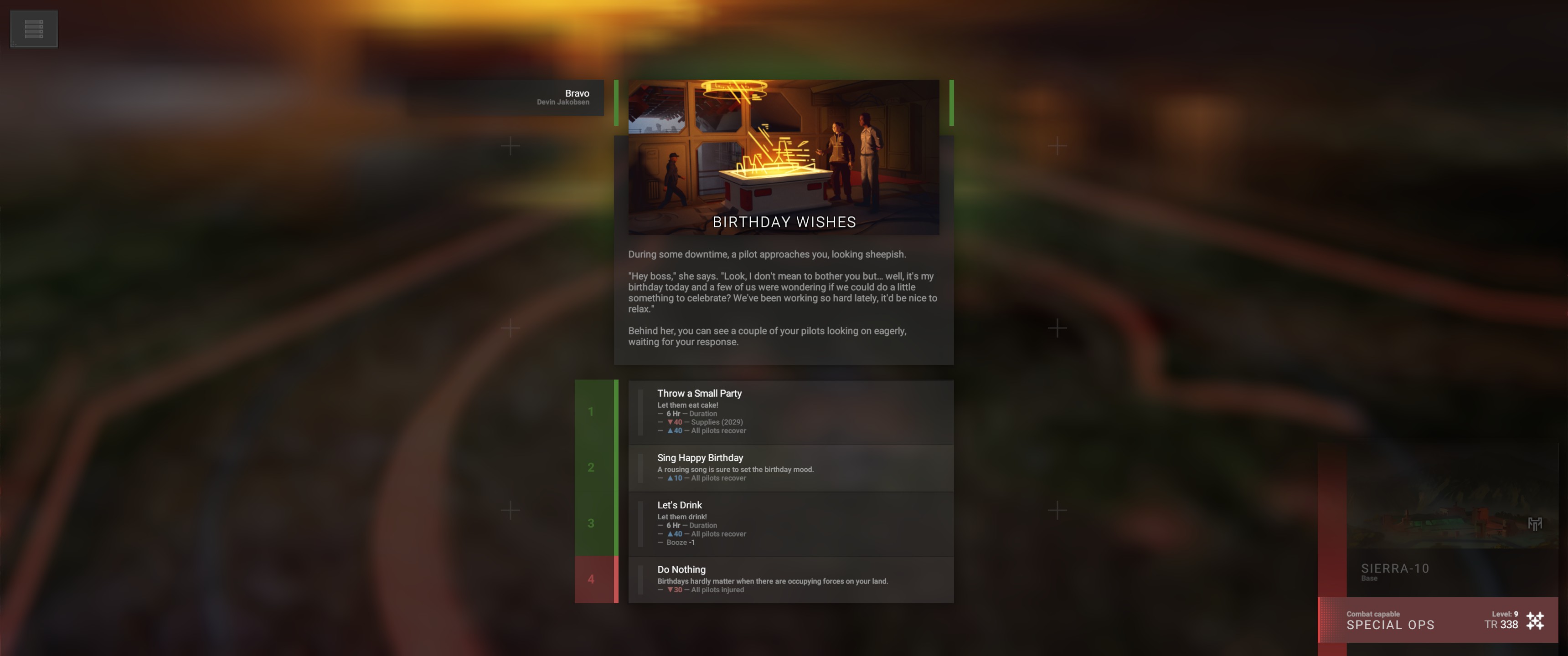

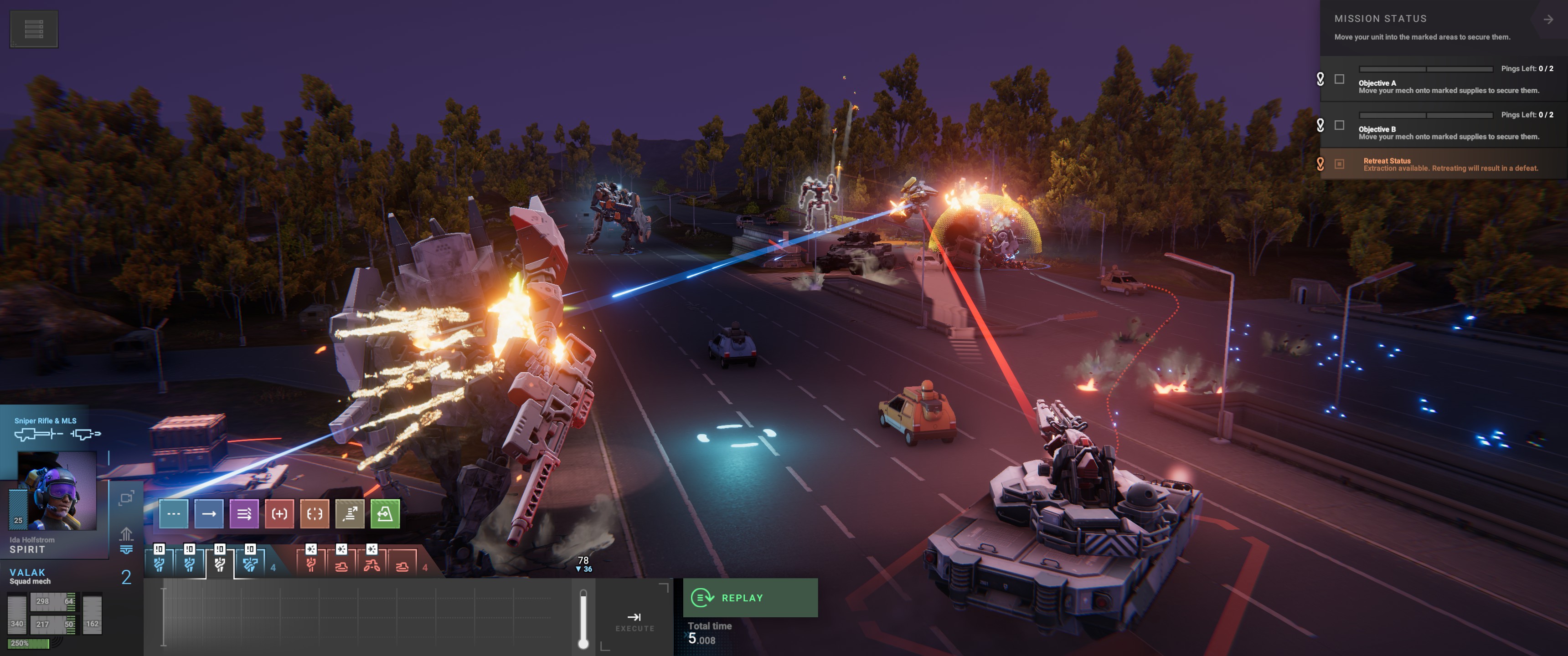
Military madlibs
Possibly the most threadbare part of the whole game is the story, because there’s effectively nothing here. Outside of a couple lines of dialogue during the tutorial, there’s no voice acting, no cutscenes and no plot arc, just the broadest strokes of a narrative with no juicy lore to chew on, or characters beyond the generic pilots that you name.
You lead the Phantom Brigade, an independent partisan squad liberating The Homeland (a vaguely Nordic nation) from The Invaders, who have come from somewhere else and taken over all your stuff. You work alongside the Home Guard army to liberate one province at a time, while occasionally picking options in FTL-inspired multi-choice vignettes that often boil down to ‘sacrifice morale for speed or boost it by cheering up pilots or farmers’.
The story’s skeletal nature mirrors the rest of the game, and echoes its own modular mech endoskeletons. There’s a smart, forward-thinking system here that's elegant and impressive to watch when working as intended. But once you attach all of the other elements to make a working game out of it, Phantom Brigade begins to creak and show its limitations. There’s the foundation for something great, but it will take a few expansions or an active modding scene to realize it. Phantom Brigade is an intriguing prototype, even if not quite ready for mass production.
An exciting concept begging for structural refinements and more meat on its robot bones.

The product of a wasted youth, wasted prime and getting into wasted middle age, Dominic Tarason is a freelance writer, occasional indie PR guy and professional techno-hermit seen in many strange corners of the internet and seldom in reality. Based deep in the Welsh hinterlands where no food delivery dares to go, videogames provide a gritty, realistic escape from the idyllic views and fresh country air. If you're looking for something new and potentially very weird to play, feel free to poke him on Bluesky. He's almost sociable, most of the time.
